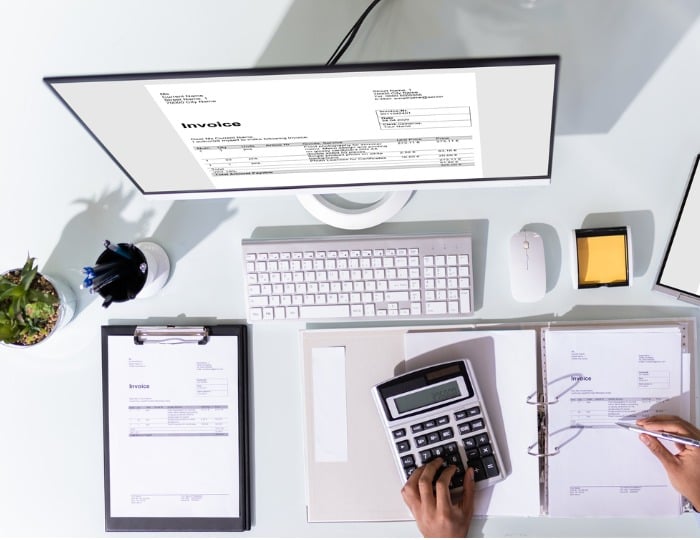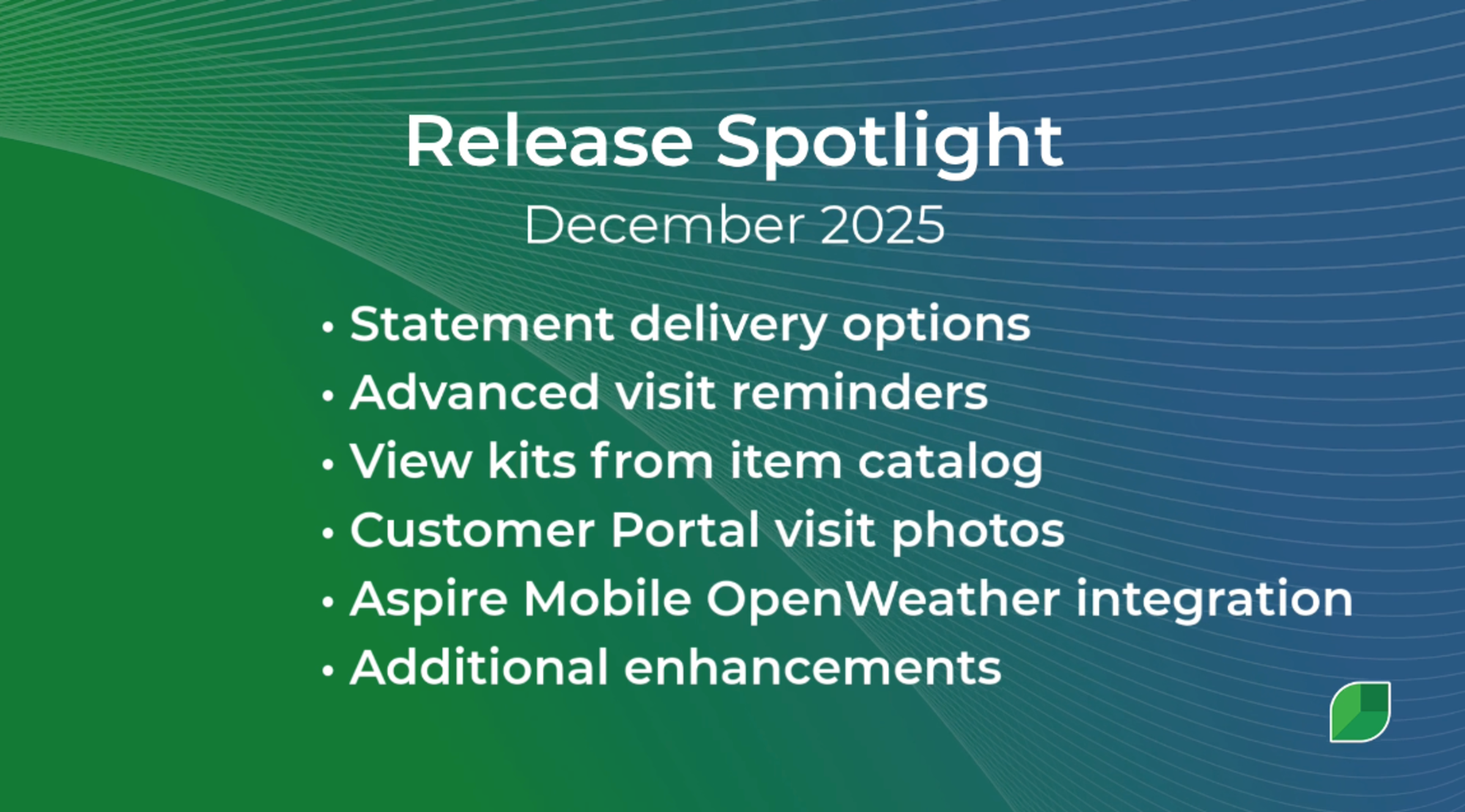Table of Contents
Table of Contents
- What is cash-based vs. accrual accounting?
- Cash basis accounting
- Accrual accounting
- Pros and cons of cash basis accounting
- Pros and cons of the accrual methods of accounting
- What accounting method should your landscaping business use?
- Why landscape businesses should use the accrual method
- Wrapping up: Cash vs. accrual accounting
- Give your company the right tools to make the switch from a cash basis to an accrual basis
Solid bookkeeping practices are vital to the health of any landscaping business. Bookkeeping—or managing your financial accounts—may look different depending on the scale of your operation, but it’s an aspect of the company that you shouldn’t neglect.
If you have a broad customer base and bring in large amounts of revenue every year, you probably work with a CPA or in-house financial staff. Even if you’re handling that side of the business yourself, it’s often something you want to deal with as quickly as possible and move on.
Committing to a cash or accrual basis for your organization
Evaluating financial processes can be a hassle at best, especially if you’re unsure where to start. This leads many landscape business owners to avoid making changes at all. However, breaking out of that mindset is crucial if you want your business to achieve its full potential.
→ One of the most foundational financial decisions a company can make is choosing a cash basis or earned/accrual accounting method.
This distinction is significant—and frequently misunderstood. The two methods represent two overall approaches to handling revenue and financial liabilities and don’t just affect internal processes.
They’re used as an official designation for your business on your tax returns.
What is cash-based vs. accrual accounting?
The primary difference between cash and accrual accounting comes down to timing.
With cash basis accounting, revenue and expenses are recorded when they hit the bank (e.g., when you receive payment for a service or pay off a bill). The accrual method adheres to generally accepted accounting principles (GAAP) by recording revenue and expenses as soon as they’re billed or incurred (e.g., when you send an invoice or receive a bill in the mail).
It might not seem significant, but the timing difference can seriously affect your financial statements.
Take this example of financial transactions for a landscaping company in December:
Sent a client an invoice for $5,000
Received a check for $3,000 from an invoice sent in November
Received a $500 bill for equipment maintenance
Paid $1,000 for subcontractor services billed in October
With the cash-basis accounting approach, the monthly financial report shows:
$2,000 in profit: $3,000 in income less $1,000 for subs
With the accrual method, by comparison:
Monthly profit of $4,500: $5,000 invoiced less $500 for equipment maintenance
Payments deposited and bills paid in December weren’t recorded for the month using the accrual method since they’d already been accounted for in November and October when the invoice was sent, and the bill was received.
Cash basis accounting
The cash method of accounting tracks transactions as they’re paid. Income and expenses only count toward your books when the charges are paid.
If you were billed for supplies in April but didn’t pay until May, the expense appears on your May balance sheet. On the other end, you wouldn’t see the income of a completed job until the customer pays their invoice.
The cash basis method gives small business owners in-the-moment cash flow insights
Cash-based accounting holds you accountable for only your business's incoming and outgoing cash flow.
Just because you know you have contracts coming to an end doesn’t mean you suddenly have an increase in revenue in a cash-based accounting system—you have yet to see the payment for those jobs.
It’s a very “where are we at right now” type of income statement––only measuring your current standings of revenue and financial liability to provide an accurate picture of profit margins.
Accrual accounting
The accrual basis accounting method is more concerned with when revenue and expenses are earned rather than paid.
This means that once a customer is billed or your business receives supply charges, you immediately track these transactions. The balance sheet shows accounts payable and receivable, not just what’s in your bank account.
You’re still at risk of missed payments or other curveballs in your invoice payments. Still, the accrual method provides a broader look at a company’s current financial position by forecasting where it should be once payments are made.
There are two types of accrual accounting:
Billing basis: Revenue and costs are recorded as invoices are sent, and bills are received.
Percentage complete: This method assigns a portion of the expected revenue from a contract to a time period in relation to the costs incurred during the same time, providing greater accuracy for long-term projects.
Accrual accounting reveals trends in cash flow statements and provides a data-backed vision of the future.
Landscapers can look ahead and see the wiggle room their companies will have as income comes in.
In some cases, this can enable businesses to be more strategic with their plans because they have a complete understanding of incoming and outgoing cash flow. In other cases, it can be risky and lead decision-makers to prepare for wider margins than currently available.
Pros and cons of cash basis accounting
Pros
Easily usable
Provides control of collections and expense in each financial period for tax advantages
Companies only pay income tax on paid invoices
Cons
It’s hard to make management decisions with financial statements based on current cash flow rather than actual fiscal status
Lenders won’t issue credit based on cash-based accounting statements
The main advantage of the cash method is that it’s straightforward to implement. It’s the structure most people use for their personal bookkeeping, and many small businesses also rely on it.
The downside is that cash-based accounting offers a very narrow (and sometimes misleading) view of how a business is doing. Looking at a single snapshot in time leaves out important pieces of the story—large upcoming expenses or periods with unusually high revenue, for example.
This results in slower decision-making regarding finances. Businesses have to plan based on current financial information and can often neglect to take their growth into the equation.
This strategy may benefit a smaller company concerned with preparing for scale rather than investing in growth opportunities by helping the business get its footing before planning for the next year.
Pros and cons of the accrual methods of accounting
Billing-basis
Pros
Easily usable
Strategic invoicing enables companies to specify their tax liabilities during certain financial periods
Most effective when combined with prompt billing for short-term installation contracts
Cons
Long-term projects spanning accounting periods will distort financial reporting
Percentage complete
Pros
Unparalleled accuracy in the financial profiles of installation and construction contracts
Gives companies foresight for tax planning by calculating tax exposure through completed work
Cons
Needs advanced reporting to track job-completion progress
Revenue calculations include invoiced money that may not be received until later
Doesn’t allow for the deferral of income taxes
Accrual accounting gives a more balanced idea of a company’s financial health by recording anticipated or upcoming expenses and expected income.
Using this method can be challenging for companies that regularly struggle to solve their cash flow problems.
Since taxes are levied when income is recorded, using the accrual method means you could owe the IRS money before a client has paid—as in the example from earlier, where you invoiced in December but wouldn’t receive the money until the following year.
What accounting method should your landscaping business use?
It’s a tricky decision, but generally, the right choice becomes clear after a quick business analysis.
Consider the following:
Your current growth stage
Your business plan progress
Your finances
Suppose you're an early-stage business still working on building a solid foundation to create stability in your business model. In that case, cash-based accounting may be a reliable option.
It’ll help you not work too far ahead and focus on the infrastructure needed to scale before you can truly hit your growth goals.
You also won’t have to pay income tax on the money you haven’t yet received.
Signs it’s time to start implementing an accrual system
For any type of business in the high-growth stage, it’s advisable to use the accrual method of accounting.
Once you start to scale, your decision-makers need to be flexible and have keen insight to keep growth going.
Not having a business forecast limits your ability to adapt and fuel expansion, deflating growth or even slowing your business down.
Why landscape businesses should use the accrual method
Cash accounting might have worked when you first started your landscape business, but it can become a roadblock as you attempt to grow.
Accrual accounting gives a broader overview of where your company’s at; it yields a complete picture of your financial health—enabling you to make better business decisions.
If you’re currently using the cash method and want to make a change to accrued, you should know a few things.
For tax purposes, the Internal Revenue Service requires businesses that hold inventory or average over $25 million in gross receipts over the past three tax years to use accrual accounting.
To change accounting methods, you must fill out and submit IRS Form 3115.
Financial decisions aren't always easy, especially when the consequences affect every area of your business. A qualified accountant or skilled in-house staff can ease the transition from cash-based accounting to accrual when the time is right.
Wrapping up: Cash vs. accrual accounting
Both methods come with merits and challenges, described in Business Principles of Landscape Contracting.
Cash-basis accounting
Provides instant insight into current cash flow
Focuses on only earned financial standings
Limits your ability to plan for the future or evaluate growth
Great for early-stage businesses
Operating with a cash-based system is straightforward and relatively devoid of nuance, so any company can handle this method without increased needs for staffing or resources.
Billing-basis accrual accounting
Creates a more comprehensive financial picture for the business
Allows your business to plan based on workload and growth momentum
Can cause payments to be due to the IRS before transactions have been finalized
Perfect for high-growth companies
An accrual system is powerful for fueling fast-paced, high-growth businesses but does come with additional challenges.
Give your company the right tools to make the switch from a cash basis to an accrual basis
If your financial teams aren’t in a place to properly manage an accrual accounting system, it can lead to certain pitfalls. Fortunately, there are tools beyond basic accounting software like Quickbooks that will fast-track your company past typical growing pains.
Aspire’s cloud-based management system is designed for businesses that focus on the accrual method of bookkeeping. Our comprehensive platform tracks every nuance of your financial reports based on the following:
Upcoming jobs
Supply needs
Property management
Internal labor costing
The dashboard contains all the financial data of an organization to give owners and managers instant insight into all upcoming costs and payments, so your company never misses a beat.
Want to experience software that helps landscapers grow at three times the industry rate? Schedule a landscaping business management software demonstration with Aspire and see how you can take your profits to the next level.








